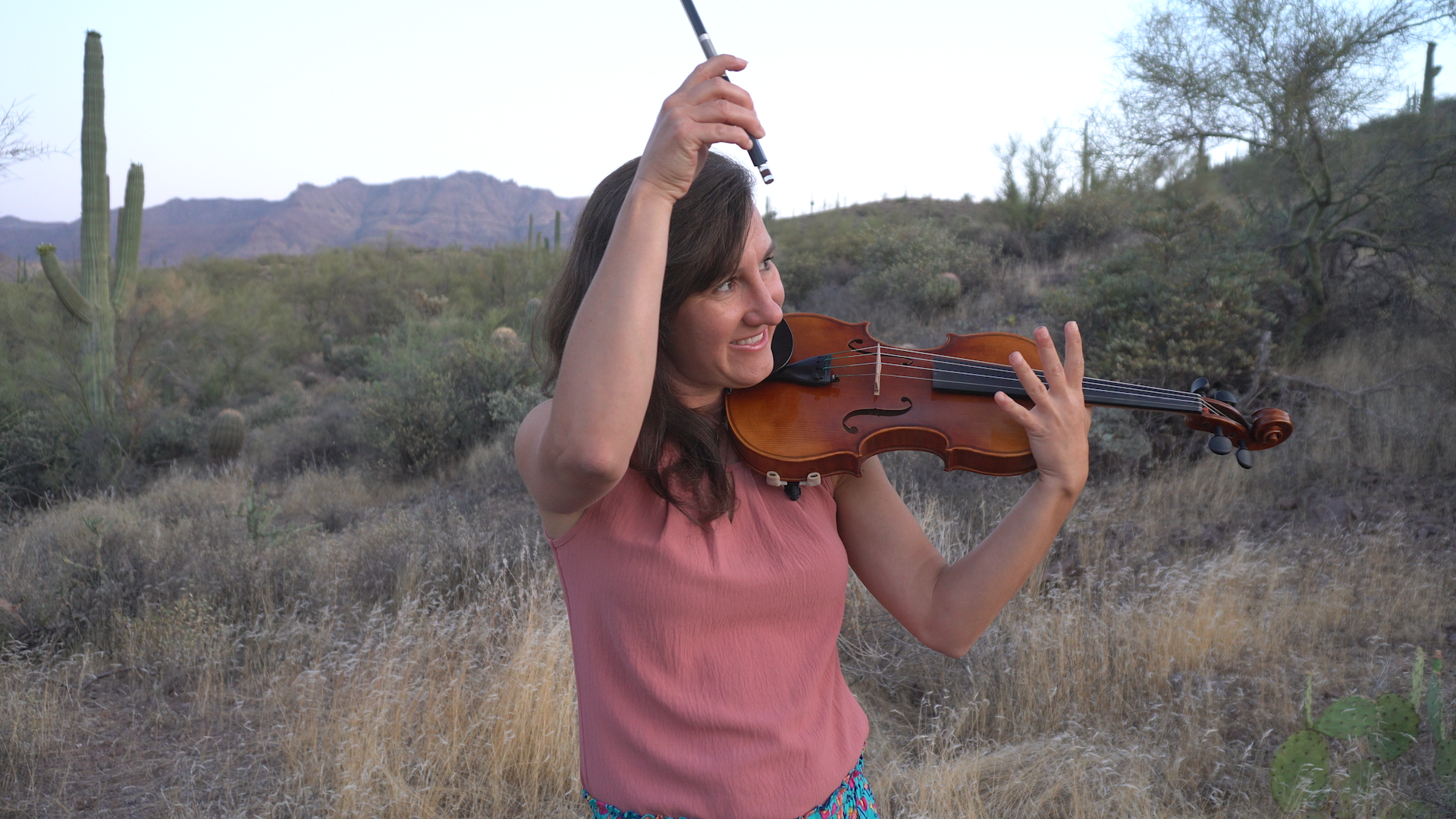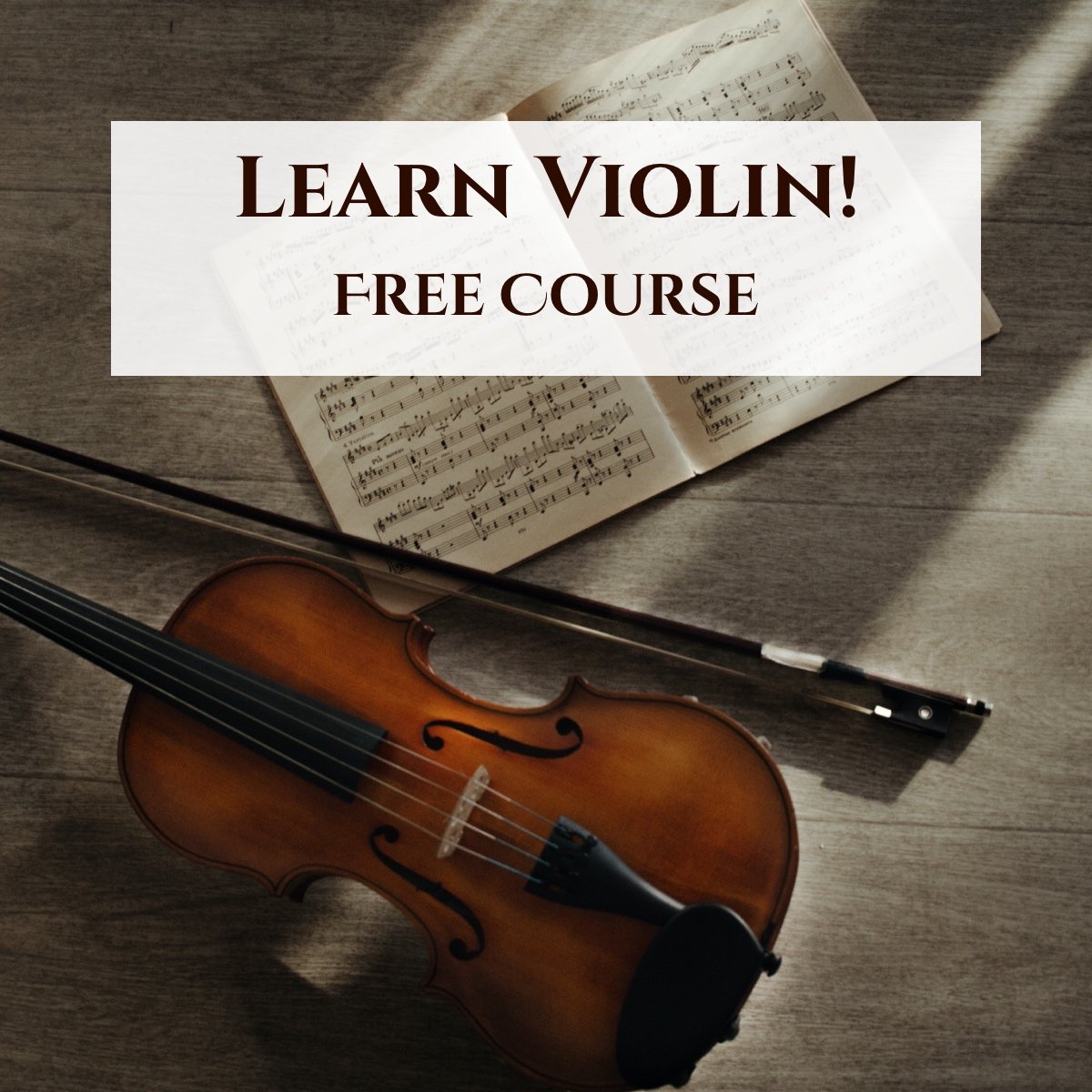Attending an adult fiddle camp is one of the best ways to motivate your playing. Adult camps for fiddle or violin usually offer workshops, classes, jam sessions, performances, dances, and ensemble playing over a few days or weekends.
You don’t have to be an expert player to attend these adult camps. Unless otherwise noted, all of these adult music camps are great for people of all ages and skill levels, from beginner to advanced players!
However, while some camps do offer courses for brand new beginners, you probably do want to show up with some basic skills. And by basic skills I mean being able to bow and produce a decent sound and being familiar with left hand notes and basic finger patterns. The more fundamentals you know beforehand, the more you will get out of the camp. But don’t worry, if you’re not ready, I can help!
Whether you love fiddle, Celtic, gypsy jazz, classical, Scandinavian, Cajun, or any other style of playing, there’s a camp for you!
In this directory, you’ll find a list of adult fiddle camps and adult classical violin camps, their locations, the style of playing they focus on, and the general time period in which they occur.
Locations vary wildly, but most adult music camps occur in idyllic locations, like the redwood forests of California, beautiful Nova Scotia, or even fiddling sailing trips around the coast of Scotland.
Start packing your bags, get your violin ready, and enjoy browsing my ultimate guide to adult fiddle and violin camps!
Or skip ahead!
Adult Fiddle and Violin Camps in Canada
Adult Fiddle Camps in the United Kingdom
Adult Fiddle and Violin Camps in Europe
Virtual Adult Fiddle Camps
Adult Fiddle Camps by Famous Fiddlers
Adult Fiddle and Violin Camps By State
Alabama
Alabama Folk School
About: Various workshops and retreats focusing on old-time music and crafts.
Date Range: Varies
Style: Old Time
Location: Nauvoo, Alabama
https://campmcdowell.org/dates-rates
California
California Bluegrass Association Summer Music Camps
About: Jams, classes, concerts, and dances.
Date Range: Summer
Style: Bluegrass
Location: Grass Valley, California
https://californiabluegrass.org/summer_music_camp/smc-home/
Julian Family Fiddle Camp
About: Acoustic music camp for people of all ages and musical abilities. Located at a rural retreat near a historic mining town.
Date Range: May
Style: Appalachian and Bluegrass
Location: Julian, California
https://californiabluegrass.org/cbaevent/julian-family-fiddle-camp/
Lark Camp
About: Learn traditional styles from all over the world.
Date Range: Summer
Style: Traditional
Location: Mendocino Woodlands, California
https://www.larkcamp.org
SoCal Chamber Music Workshops
About: One week workshop for adult amateur chamber musicians. Great for intermediate or advanced players.
Date Range: Summer
Style: Classical chamber music
Location: Claremont, California
https://www.socalchambermusic.com
Valley of the Moon Scottish Fiddling School
About: Alasdair Fraser’s Scottish fiddle camp in the redwood forests of Northern California.
Date Range: August
Style: Scottish fiddling
Location: Boulder Creek, California
http://www.valleyofthemoon.org
Colorado
Colorado Roots Music Camp
About: Multiple camps with small class sizes featuring a wide variety of styles.
Date Range: Summer
Style: Varies but include bluegrass, folk, blues, swing, Irish, and more.
Location: Divide, Colorado
https://www.rmmc.org/roots/
Rocky Mountain Fiddle Camp
About: Daily fiddle classes, contra and square dances, jam sessions, concerts, and opportunities to hike and swim.
Date Range: Summer
Style: Varies but includes Old Time fiddle, Cape Breton, Klezmer and many other styles
Location: Golden Bell Camp, Colorado
https://www.rmfiddle.com
Florida
Florida Fiddlers Convention
About: Workshops, jams, concerts, string band contest, and a homemade pie contest!
Date Range: October
Style: Fiddle
Location: Keystone Heights, Florida
https://flafiddlers.wordpress.com
Kansas
Sunflower Ragtime Orchestra
About: Rehearse and perform popular orchestral music of the early 1900s with other adult amateur musicians.
Date Range: Summer (2 Sessions)
Style: Ragtime, Orchestra
Location: Olathe, Kansas
https://www.musicsmiths.net/sro
Medieval Music Sumer Camp
About: Explore the music of the 12th and 13th centuries on period instruments.
Date Range: Summer
Style: Medieval
Location: Metropolitan Conservatory, Overland Park, Kansas
https://www.metropolitanconservatorykc.com/medievalmusiccamp
Heartland Chamber Adult Workshop
About: A four-day workshop where you are coached on chamber music by members of the Kansas City Symphony.
Date Range: Summer
Style: Classical chamber music
Location: Prairie Village, Kansas
https://www.heartlandchambermusic.org/adultworkshop
Kentucky
Cowan Creek Mountain Music Festival
About: Classes, jam sessions, and dancing for adults and kids in the beautiful Appalachian mountains of eastern Kentucky.
Date Range: Last week in June
Style: Kentucky mountain music
Location: Whitesburg, Kentucky
http://cowancreekmusic.org
Louisiana
Dewey Balfa Cajun and Creole Heritage Week
About: Immersive, multi-day lessons, workshops, and dances including instruction on Louisiana music, crafts, and cooking.
Date Range: March
Style: Cajun and Creole
Location: Eunice, Louisiana
https://lafolkroots.org
Maine
Maine Fiddle Camp
About: Workshops, dances, jam sessions for all ages and levels. Several sessions offered.
Date Range: Summer
Style: Traditional
Location: Camp NEOFA, Montville, Maine
https://www.mainefiddlecamp.org
Massachusetts
Country Dance and Song Society
About: Connecting people through the traditions of English Country Dance, contra, and square dance and the music that is an integral part of those traditions.
Date Range: Varies, but mostly Summer
Style: Varies
Location: Virtual and Various Locations in Massachusetts, Maine, and Michigan
https://cdss.org
Minnesota
Bluff Country Gathering
About: Fiddle workshops (and other instruments), concerts, and dances.
Date Range: May
Style: Traditional American Music
Location: Spring Grove, MN
http://www.boveeheil.com/bluff-country-gathering.htm
Adult Chamber Music Retreat
About: A six-day retreat for classical music enthusiasts. For intermediate players or community orchestra members.
Date Range: June
Style: Classical chamber music
Location: Grand Rapids, Minnesota
https://www.thirdcoastchambercollective.com/projects/chamber-camp
Montana
Montana Fiddle Camp
About: Multiple camps on the old-time music tradition in the Little Belt mountains of Montana.
Date Range: May/June
Style: Varies by camp, but includes fiddle and Western swing and more
Location: Monarch, Montana
https://www.montanafiddlecamp.org
New Hampshire
Fiddleheads Jam Camp
About: Jam Camp offers guided jams with focus on jamming essentials and techniques - hearing chords, backup, playing in different styles, soloing and having fun!
Date Range: September
Style: From blues to bluegrass, jigs to jazz, cajun to country and more!
Location: Coontoocook, New Hampshire
https://www.fiddleheadscamp.com
New York
The Ashokan Center Music and Dance Camps
About: Jay Unger and Molly Mason’s famous fiddle camp. Various styles of camps held in the serene setting of the Catskill Mountains.
Date Range: Varies
Style: Camps vary but include such styles as bluegrass, Western Swing, Scottish, and Zydeco just to name a few.
Location: Olivebridge, New York
https://ashokancenter.org/camps/
Catskills Irish Arts Week
About: Classes, workshops, dances, and concerts featuring a variety of Irish instruments.
Date Range: Summer
Style: Irish Fiddling
Location: East Durham, New York
https://www.catskillsirishartsweek.com
Scor! String Experiences for Adults
About: Various camps with a focus on ensemble-playing.
Date Range: Varies
Style: Varies: classical and fiddle.
Location: Canandaigua, New York (Finger Lakes Region), and various other places around the U.S.
https://www.scorstrings.com/pages/in-person-events
North Carolina
Blue Ridge Music Week
About: Daily classes for fiddle (and other old time instruments), jam sessions, and concerts.
Date Range: Summer
Style: Old Time Fiddle
Location: Mars Hill, NC
https://www.brotmw.org
John C. Campbell Folk School
About: Year-round weeklong and weekend classes for adults in craft, art, music, dance, and more. Small-sized campus on a scenic 270-acre campus.
Date Range: Varies
Style: Varies
Location: Brasstown, North Carolina
https://www.folkschool.org
Jink and Diddle School of Scottish Fiddling
About: Multiple sessions on Scottish fiddling in the mountains of North Carolina.
Date Range: Summer
Style: Scottish fiddling
Location: Banner Elk, North Carolina
http://www.fiddletree-music.com
The Swannanoa Gathering
About: Various week-long programs in various forms of folk music and dance.
Date Range: Summer
Style: Varies by camp
Location: Swannanoa Valley, near Asheville, North Carolina
https://swangathering.com
North Dakota
International Music Camp/ Adult Community Camps
About: A four-day camp for string orchestra.
Date Range: Summer
Style: Classical Orchestra
Location: International Peace Garden, North Dakota/Manitoba
https://internationalmusiccamp.com/programs-and-sessions/music/adult-community-camps/
Ohio
Ohio Scottish Arts School
About: Classes in Scottish Arts of fiddle, harp, highland dance, pipes, and drums
Date Range: Summer
Style: Scottish Fiddle
Location: Berea, Ohio
https://ohioscottishartsschool.com
Oklahoma
Jana Jae Fiddle Camp and Music Festival
About: Individual and group sessions for all ages and levels.
Date Range: Labor Day Weekend
Style: Fiddle
Location: Grove, Oklahoma
https://www.grandlakefestivals.com/fiddle_camp.htm
Pennsylvania
Folk College
About: A weekend of folk music workshops and concerts.
Date Range: May
Style: Folk
Location: Huntingdon, Pennsylvania
https://folkcollege.com
Tennessee
Nashville Acoustic Camps
About: Small size fiddle camps by Megan Lynch Chowning.
Date Range: Varies
Style: Old Time Fiddle
Location: Nashville, Tennessee
https://www.nashvilleacousticcamps.com
Texas
Acoustic Music Camp
About: Learn banjo, mandolin, guitar, & bass with the The Tennessee Bluegrass Band. Learn to pick, jam, and have fun.
Date Range: April (in Conjunction with the Bluegrass Heritage Festival)
Style: Bluegrass
Location: Dallas, TX
https://acousticmusiccamp.com
Live Oak Fiddle Camp
About: Advanced fiddle and guitar instruction on a working cattle ranch.
Date Range: May
Style: Various Fiddle styles
Location: Hallettesville, Texas
https://liveoakfiddlecamp.com
Camp Bluegrass
About: A six-day camp with a focus on individual skills and slow jams.
Date Range: July
Style: Bluegrass
Location: Levelland, Texas
https://campmcdowell.org/dates-rates
Vermont
Northeast Heritage Music Camp
About: A welcoming camp community in the hills of Vermont for a week of traditional music immersion open to all instruments.
Date Range: Summer
Style: Music traditions of New England and eastern Canada along with related traditions from around the world.
Location: Starksboro, Vermont
http://www.northeastheritagemusiccamp.com
Washington
Cascadia Irish Music Week
About: A yearly gathering of learners and teachers of Irish traditional music and culture.
Date Range: Summer
Style: Irish
Location: Olympia, WA
https://www.cascadiairish.org/home
Fiddle Tunes
About: It’s a week-long, total-immersion workshop with a hallmark of presenting an expansive array of fiddle styles from specific geographic regions of the world.
Date Range: Summer
Style: Varied styles with a focus on fiddle
Location: Port Townsend, Washington
https://centrum.org/program/fiddle-tunes/
West Virgina
Allegheny Echoes
About: Celebration of Appalachian culture and heritage through old time music classes and outdoor activities in the heart of the mountains.
Date Range: Summer
Style: Bluegrass
Location: Marlinton, WV
http://www.alleghenyechoes.com/location
Wisconsin
Hardanger Fiddle Music and Dance Summer Workshops
About: Intensive Hardanger fiddle and Norwegian dance classes, concerts, culture sessions, and evening parties.
Date Range: July
Style: Hardanger fiddle
Location: Dodgeville, Wisconsin
https://www.hfaa.org
Haugaard’s West Denmark Fiddle School
About: Classes, singing, and dancing.
Date Range: June
Style: Scandinavian and Anglo/Celtic music
Location: West Denmark, Wisconsin
https://www.wdfiddleschool.org



























